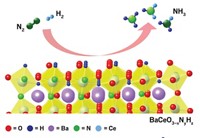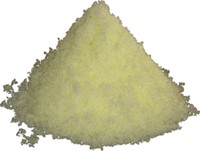Advertisement
Grab your lab coat. Let's get started
Welcome!
Welcome!
Create an account below to get 6 C&EN articles per month, receive newsletters and more - all free.
It seems this is your first time logging in online. Please enter the following information to continue.
As an ACS member you automatically get access to this site. All we need is few more details to create your reading experience.
Not you? Sign in with a different account.
Not you? Sign in with a different account.
ERROR 1
ERROR 1
ERROR 2
ERROR 2
ERROR 2
ERROR 2
ERROR 2
Password and Confirm password must match.
If you have an ACS member number, please enter it here so we can link this account to your membership. (optional)
ERROR 2
ACS values your privacy. By submitting your information, you are gaining access to C&EN and subscribing to our weekly newsletter. We use the information you provide to make your reading experience better, and we will never sell your data to third party members.
Synthesis
Vitamin D-3 Goes With The Flow
A microreactor combines light-mediated and thermal reactions to improve a synthetic route to an important vitamin
by Carmen Drahl
January 3, 2011
| A version of this story appeared in
Volume 89, Issue 1
With the aid of a microreactor, chemists in Japan have combined light-mediated and thermal reactions to improve the synthesis of vitamin D-3. Many foods are fortified with vitamin D-3, but industrial routes to the vitamin have yields of less than 20%. The penultimate step in industrial syntheses, a light-mediated isomerization, is not selective, and it’s tough to clear away by-products of the reaction. Shinichiro Fuse, a member of a group led by Takashi Takahashi of Tokyo Institute of Technology, described a continuous-flow microreactor process that avoids these problems. The team’s microreactor performs the light-mediated isomerization and the next step in the synthesis, a thermal isomerization, at the same time (Chem. Commun., DOI: 10.1039/c0cc02239j). The process reduces purification waste and has an isolated vitamin D-3 yield of 32%, the highest yield so far that doesn’t involve expensive specialized laser equipment. This is the first time researchers have combined thermal and photoreactions in a single microreactor, Fuse notes. Fuse and coworkers are now working to make analogs of vitamin D-3 with their system.





Join the conversation
Contact the reporter
Submit a Letter to the Editor for publication
Engage with us on Twitter